PRAGUE, CZECH REPUBLIC – There are two stories circulating about why this city suffered little damage during World War II, despite being occupied by Hitler’s Nazi army almost from the outset.
In fact, over the course of WWII, only three bombs ever fell on the historic centre of the Czech capital – a confused Ally pilot mistook Prague for the nearby German city of Dresden and dropped his payload here one cloudy night near the end of the war.
So, the first story suggests that, because there were never any armament factories in Old Prague, or Praha as the locals call it, the Allies didn’t consider it a threat.
The second, and the one the locals like to tell, is that wartime leaders Winston Churchill and Franklin D. Roosevelt got together and decided they could not destroy Europe’s most beautiful city.
After just a few hours of wandering the historic Old Town’s crooked streets lined with crayon-coloured buildings that lead to great squares where majestic towers and churches stand, one tends to believe the second story.
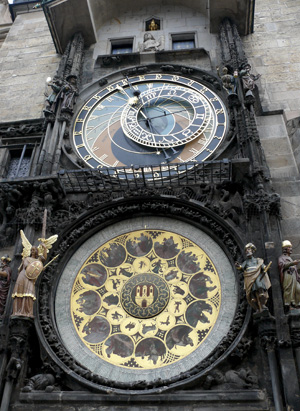
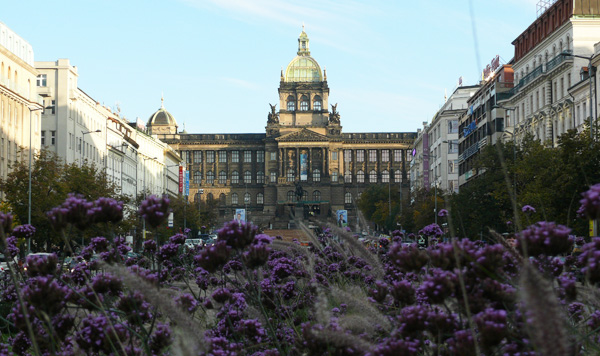
Above: Prague's Old Town clock and it's many historic buildings survived Allied bombs during WWII.
Prague isn’t just one of Europe’s most beautiful cities; it qualifies as one of the most delightful places on the planet.
This city of Mozart – the genius composer spent much time here – is a symphony of architecture where every generation of design, from Gothic, Baroque and Art Nouveau to Modernism, merge together in perfect in harmony.
And because Prague was spared damage during major European conflicts, especially World War II, the city’s skyline has been allowed to change gradually and systematically.
The results are truly stunning.
There are few streets in Prague that don’t offer some kind of architectural wow factor. And while the eye-candy is spread throughout this city that has served as capital of the Czech state for over a thousand years, the greatest concentration can be found in the Old Town Square.
The ancient square, which dates back to the 10th century, is truly the crossroads of architectural history. Many different building styles, spanning 800 years of history, converge here to create arguably the greatest square in Europe. From its medieval Clock Tower and Baroque churches to its Romanesque and Art Nouveau buildings, the square, boarded by charming cafes and filled with thousands of tourists daily, is the city’s centerpiece.
The Clock Tower’s astronomical clock was constructed in 1410 and still works today. People climb over 200 steps to reach the top and are rewarded with breathtaking views of Prague. And they gather around its base each hour to see golden figures perform as they have without fail throughout the city’s history.
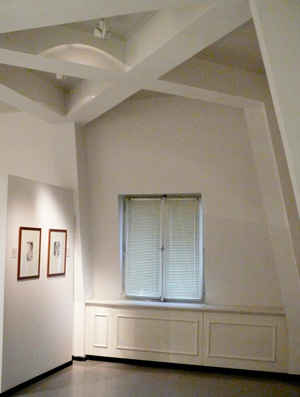
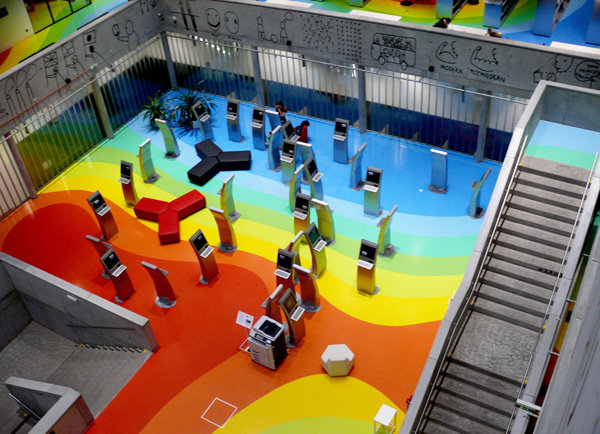
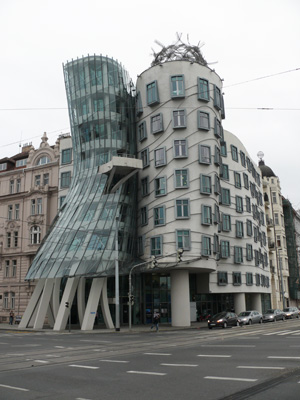
Above: While one of Europe's oldest cities, Prague has some dynamic new designs that delight visitors.
The square has been a gathering spot for centuries – in good times and bad. In 1621, thousands assembled here to witness the executions of 27 men blamed for starting the Thirty-Year War. Now, though, because of the enormous crowds and the noise they create, many older residents who have called this place home from the day of their birth, say they are being forced to find quieter neighbourhoods.
Martina, a local woman who is guiding us through the square, suggests the real reason for the departures has more to do with the fact that tourists have driven up the price of beer in the square. Beer, after all, is a staple with Czechs.
In one corner of the great square stands St. Nicholas Church - not to be confused with the church of the same name that stands in Lesser Town, the “newer” area of the city which was established in the 16th century.
Both churches, like so many others in Prague, offer concerts each night where works of Austria’s Wolfgang Amadeus Mozart and great Czech composers like Antonin Dvorak are performed. Tickets cost about $10 and the acoustics in both churches make the experience truly remarkable.
St. Nicholas in Lesser Town is where a troubled Mozart, who was much loved by the citizens of Prague, would play the organ for delighted audiences – for free.
The streets off Old Town Square all lead to the city’s other architectural marvels – Prague Castle and its regal buildings, courtyards and magnificent St. Vitus Cathedral; the much photographed 14th century Charles Bridge; the revered 12th century Jewish Quarter and its collection of medieval buildings; the Art Nouveau Municipal House - now a concert hall but once the seat of Czech power - and the blackened with age 15th century City Gate that stands beside it.
On a walk up Staremesto Street, we find a lovely building called the House of the Black Madonna, which the citizens of this great city are most proud because it’s one of the best examples of Czech Cubism, a elegantly simple architectural style featuring no right angles that was perfected by 13 brilliant Prague architects whose work spanned a 10-year period.
There are several great examples of Czech Cubism architecture scattered about the city but the House of the Black Madonna, which opened in 1912, is the most talked about. The House was turned into a Czech Cubism museum a few years ago and now displays many fine examples of the architectural art form, which is a combination of Baroque and Gothic styles that borders on Art Deco.
The Villa Muller, created by famed Czech architect Adolf Loos in 1930 and now protected as a UNESCO World Heritage Site, is another Czech Cubism delight that was spared from ruin after being let fall into decay during the country’s communist era. The house, highlighted by rich green marble walls personally picked by Loos from a Swiss quarry, is an avant-garde masterpiece and one of the Czech Republic’s most treasured national monuments. The city of Prague has invested close to 4 million euros bringing the house and its delightful gardens back to their original glory and it’s been money well spent.
What makes Prague such an architectural delight is that the city, unlike its conservative neighbour Vienna, has not been afraid to mix old and new deigns and the bold experiment has led to a spectacular skyline.
There’s no better proof of that than the Dancing House – a.k.a. the Astaire and Rogers Building named in honour of the famed American dance couple – whose futuristic design surprisingly does not look out of place amongst the historic buildings that surround it on the banks of the Vltava River.
The Dancing House design came from the immigration of Canadian architect Frank Gehry and opened to much debate in 1996. However, the building with the facade that twists and turns is now accepted as a much-loved addition to Prague’s architectural landscape.
While the lineup of medieval, Baroque, Renaissance and Gothic churches truly amazes visitors to Prague, a Czech Cubism-designed marvel known as the Church of the Sacred Heart found in District 3 is a highlight of any architectural tour – there are many offered here – of this city.
The unique Church of the Sacred Heart is a marvel of Cubism which was completed in 1932. Its brick red brick and see-through clock tower are the highlights of its exterior and its golden alter lined with bronzed statues of six Czech patron saints makes you want to linger for hours.
However, few do. Martina tells us that only 4 per cent of the Czech population attends church service on a regular basis and that over 50 per cent of the country remains Atheist. And while one assumes that’s a hangover from the communist era, Martina says it has more to do with a rebellion against Austria’s Hapsburg dynasty when they tried to ram Catholicism down the throats of their conquered Czech flock back in the 14th century.
“The best place to see the Prague skyline is from that communications tower over there,” says Martina, pointing to an unattractive building that looks more like a launching pad but unfortunately dominates the skyline of the River Vltava’s right bank.
“At least that’s what the people of Prague say, because once you’re in that ugly tower, you don’t see it,” smiles Martina, who, like most Czechs don’t hide their hatred for the silver spire built by the communists to block transmissions of Radio Free Europe – a vital source of outside information for the Czechs during that dark period of their history. To make matters worse, the tower, which remains idle, save for some modern communications equipment that decorates its top, was built over an old Jewish cemetery.
“The communists had no respect for religion or culture,” snarls Martina, who tells her followers the child-like figures crawling over the outside of the tower, “were added later by a controversial Czech sculptor and they make it look even uglier.”
The city’s National Technical Library, which opened 9/9/09, is another new architectural addition that most Prague citizens are proud of. But the cold, graffiti-covered interior of the building that houses the Czech Technical University looks more like an Ikea store – which is probably why most attending students love it.
While Czech Cubism and other modern designs are delightful distractions from the city’s ancient architecture, most visitors still spend most of their time here photographing the older architectural collection.
One of the most photographed buildings is the Municipal House, whose dreamy façade looks like it jumped off the pages of a fairytale book. But as remarkable as the exterior of this excellent example of Art Nouveau design is, its interior, highlighted by a grand stage surrounded by a giant rose glass skylight, a gigantic oval chandelier and beautifully decorated parlours used to entertain before performances, truly takes your breath away.
The mother lode of architecture can be found on the highest hill overlooking to city. That’s where Prague Castle, St. Vitus’ Cathedral and the grand buildings that make up the former royal residences used throughout the ages by the Kings of Bohemia – the Bohemian Crown Jewels remain here – and Holy Roman emperors can be found. The castle, still regarded as the largest coherent castle complex in the world, is used today as the residence of the Czech president.
The entire city was built around Prague Castle, which dates back to the 9th century. And because it has been rebuilt and added to over the centuries, many different architectural styles can be found in the castle that sits perched overlooking the red-tile roofs that make up Prague’s Old and Lesser towns.
While Gothic and Romanesque buildings dominate the castle grounds, its medieval Old Castle, which rests on a 10th century foundation and from where the Thirty-Year War started after three representatives of neighbouring Austria were unceremoniously tossed out a turret window, also delights visitors.
The combination of Gothic and Romanesque architecture used to create stunning St. Vitus’ Cathedral results in one Central Europe’s most dynamic structures. St. Vitus, where three Hapsburg Empire kings are buried along with St. Wenceslas, the country’s beloved patron saint and many other martyrs and religious hierarchy, now serves as seat of power of the Archbishop of Prague.
It took over 1,000 years to complete the cathedral that can accommodate more than 1,200 worshipers. The stained glass windows within are among the greatest collection in the world and the coloured light that streams through them and bounces off the cold, grey stone turns the holy structure into a fairytale place filled with pixy dust.
The cathedral, where King Charles IV, who had the Charles Bridge built, is buried in a crypt below the main alter, is surrounded by other historic structures, including the Maria Theresa building, named after the only female ruler of the Hapsburg Empire, which was used to house widows. It later became headquarters for the dreaded secret police in communist times.
From a terrace just outside the castle grounds, one gets a wonderful panoramic view of Prague and a small replica of the Eiffel Tower, which is just a tenth of the size of the original Paris version and sits in a wooded area off to the side of the castle.
The winding street leading from Prague Castle to Charles Bridge, Nerudovast Street, takes you past more pastel-painted Baroque-style homes, many of which have been turned into cozy, low-cost hotels, like the Green Lobster, where for about $100 a night you get comfortable accommodation with an historic twist.
The street also winds through Lesser Town and past St. Nicholas Church, and then to the Charles Bridge, which was completed in 1357 and forms part of a pedestrian path known as the Royal Way, which starts at the ancient city gate next to the Municipal House, passes through the Jewish Quarter and over the bridge before ending at Prague Castle.
The Charles Bridge is one of the city’s most important structures and judging by the crowds one encounters here each day, a favourite with visitors and locals alike. Thirty statues line the stone bridge that leads to the Jewish Quarter, which offers up over 550 years of history.
Once known as the Jewish Ghetto that fell into such disrepair after the Middle Ages that it was ordered torn down and rebuilt by the city in the 15th century, the Quarter is now a major tourist attraction. It’s dotted with handsome structures, like the Gothic-style Old-New Synagogue, the oldest in Europe dating back to the 13th century and which is still in use today.
But the main draw in the Jewish Quarter is its cemetery, one of the oldest in Europe, where over 100,000 bodies are stacked 12 layers deep in an area not much bigger than a city block. The thousands of Renaissance and Baroque tombstones, now protected behind gates and a high stone wall, are treasured by the Jewish community worldwide.
“The Jewish population asked the city to let it expand the cemetery but was denied, so that’s why bodies had to be stacked in the plots,” says Martina. “Because of the limited space, the bodies were buried with coffins.”
The monuments in the Jewish Quarter are considered among the most valuable Jewish relics in the world.
All tours of Prague either start or end “under the tail,” says Martina.
“Under the tail” is a spot in Wenceslav Square beneath the tail of a bronze horse carrying the country’s patron saint decked out in the armour of a knight that sits at the top of the square that bears his name. The statue stands across from the country’s National Museum, a Neo-Renaissance beauty and one of the city’s most elaborate buildings, both inside and out.
“If you’re meeting someone in Prague, then you always say under the tail because a subway station sits beneath the National Museum and so it’s easy to meet people there,” says Martina.
Wenceslav Square is lined on both sides by other delightful structures from various architectural periods and attracts tens of thousands of people daily, who are lured there by the lovely cafes, fine array of shops, excellent lineup of restaurants and gardens that run up to the statue of Wenceslav.
Prague is a place that must to seen to be appreciated – and it all starts with its architecture.
Information
For information on travelling to Prague, go to
prague-info.cz
The best way to get to Prague from Toronto is via Amsterdam on KLM and Czech Airlines.